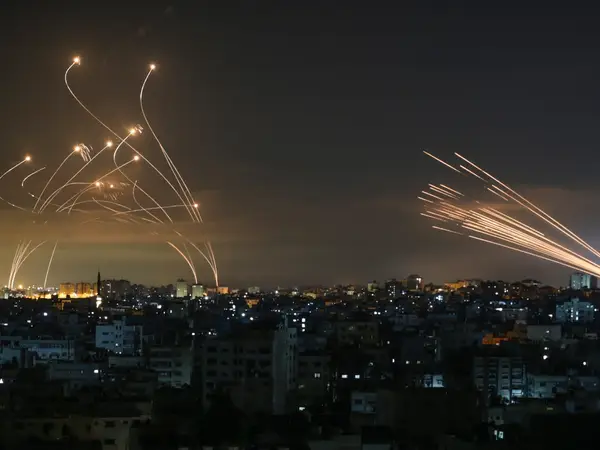The Jerusalem Post claimed Saturday that Tehran “believes time is on its side” to “erode Israel’s power slowly” by unifying and arming Palestinian groups.
An article by journalist Seth Frantzman cites a Fars News interview with Hossein Salami, commander-in-chief of Iran’s Revolutionary Guards (IRGC), to claim Tehran had begun a plan to forge unity between Palestinian groups by “provoking tensions in Jerusalem, attempting to push the battle into Israel’s streets last year.”
Fars had described the violence in May 2021 – which escalated from protests by evicted Palestinian families in Sheikh Jarah, occupied east Jerusalem, and saw rockets fired from Gaza and Israeli air-strikes – as a “new phase” in which the Palestinians’ struggle had changed “from an intermittent to a continuous movement.”
The Fars report, Frantzman points out, named Jenin, Ramallah, Tulkarm, and Sheikh Jarrah as areas in the West Bank where Iran wanted more of “this pressure-cooker effect.” Salami noted that the Palestinian movement had “managed to equip itself with a large number of rockets” despite the geographical gap between West Bank and Gaza, both historically within mandate Palestine but outside 1947 Israel, and despite Israel building “concrete walls with…extremely modern and advanced…electronic and optical sensors.”
Frantzman also highlights Salami pointing out that to the north, Hezbollah in Lebanon had “hundreds of thousands of rockets…arrayed in front of the Zionist regime.”
The Jerusalem Post piece argues that Iran aims to drive Hamas into a united command with Palestinian Islamic Jihad (PIJ), which is an Iranian ally and earlier this month was involved in an exchange of fire from Gaza that led to 44 dead Palestinians, including 15 children, and three wounded Israelis.
‘Full-scale ground war’
The IRGC commander’s remarks showing more ambitious plans for regional interference comes as Iran is close to reaching agreement on reviving the 2015 nuclear deal. Opponents of the Biden Administration policy of reviving the agreement argue that it would simply provide more money to Iran for making mischief in the region, by lifting US sanctions.
This single command, Frantzman continues citing Salami, would then absorb “Palestinian factions in the West Bank,” presumably Fatah, and means Iran could “threaten Israeli with a multi-front war,” especially as Iran “mobilizes Hezbollah to control more of Lebanon” utilizing experience fighting Isis (the Islamic State group] in Syria to lead to a “full-scale ground war.”
Neither Salami nor Frantzman explain why Hamas or Fatah would accept Tehran-allied PIJ as such a driving force. While PIJ maintained its alliance with Iran and Syrian President Bashar al-Assad through the Syrian war, Hamas backed mainly Sunni rebels, left its offices in Damascus 2012 and has only recently started talks to resume relations with Assad.
‘Salami politics’
Frantzman disputes Salami’s claim that Israel’s withdrawal under fire from Lebanon in 2000, ending a 22-year occupation, shows Zionists “are not people who stay in the trenches.” Neither does he savor Salami’s wrestling notion that an opponent’s strength can sometimes be turned into a weakness.
But the Iranian plan ignores another factor, the potential influence of Saudi Arabia and its allies in Palestinian politics. It assumes that Iran is the only player in the region, while even Syria has improved ties with the United Arab Emriates.
The IRGC’s approach, Frantzman concludes, hinges on trying to replace the disunity long characterizing Palestinian politics. “The IRGC wants to stop this salami politics, this divide and conquer strategy. It wants the PIJ to united Palestinians, despite constant failure in this respect.”
